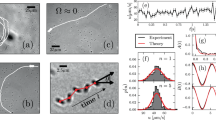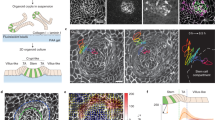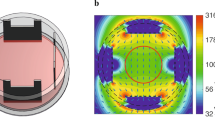Abstract
IN unpublished researches of Fardon, Sullivan and Andrus1, a series of experiments were conducted showing the outgrowth of cells from traumatized sections of embryonic chicken intestine in vitro. It was observed at the time that the new outgrowth of cells aligned itself into uniform patterns. The nature of the outgrowth was analogous to the fields surrounding a bar magnet. This uniform distribution of cells served to indicate a force of attraction between the two portions of outgrowth.
This is a preview of subscription content, access via your institution
Access options
Subscribe to this journal
Receive 51 print issues and online access
$199.00 per year
only $3.90 per issue
Buy this article
- Purchase on Springer Link
- Instant access to full article PDF
Prices may be subject to local taxes which are calculated during checkout
Similar content being viewed by others
References
Fardon, J. C., Sullivan, W. A., and Andrus, Sr. M. Basilia, Studies Inst. Divi Thomæ, vol. 2, No. 2, 233 (1939).
Doljanski, L., and Roulet, Fr., Roux's Arch. Entwicklungsmech. Organ., 131, 3, 512–531 (1934).
Author information
Authors and Affiliations
Rights and permissions
About this article
Cite this article
FARDON, J., BROTZGE, G., LOEFFLER, M. et al. Attraction Fields in Vitro. Nature 146, 619–620 (1940). https://doi.org/10.1038/146619a0
Issue Date:
DOI: https://doi.org/10.1038/146619a0
Comments
By submitting a comment you agree to abide by our Terms and Community Guidelines. If you find something abusive or that does not comply with our terms or guidelines please flag it as inappropriate.



